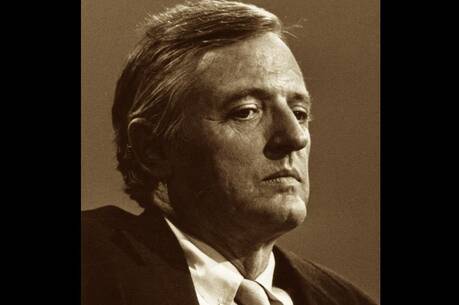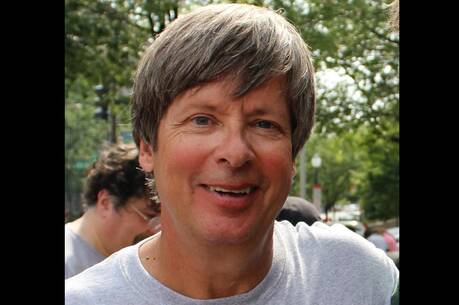50's Lit
Authors love to write their memoirs of the 1950’s, when they came of age and were apt to have a copy of The Catcher in the Rye in their jacket pocket. I started out in this way myself as an English major at Columbia College. The atmosphere in the English department in Hamilton Hall reflected the style of the 50’stweedy, exclusive, discriminating. The Ivy League was as much in vogue as its undergraduates’ blue blazers, red ties and white buckskin shoes. Faculty members in the English department were referred to as Mister, which implied a rank above either Doctor or Professor. Nameplates on the office doors along the English corridor read Mr. Van Doren, Mr. Trilling, Mr. Chase, Mr. Dupee, Mr. Bentley and so onthough terse, it said much.
They were an accomplished group, but it was Lionel Trilling who spoke most for the academic tone of that time and place. I remember his first words when I began a seminar with him. Some of us, he announced with an ethereal wave of his hand, which held a cigarette trailing a fine plume of smoke, have begun to think that Dylan Thomas has been overrated. I was entranced by Trilling’s essays, but he also struck me as being so scrupulous as to preclude commitment to any passionate action. Who could ever imagine him at the barricades?
After graduating from college, I began dreaming of life as a freelance writer, while I worked at a day job that took me to Manhattan’s expensive apartments and, more often, to its soot-darkened slums. My postgraduate course in the life of the streets belonged, I think, as much to the 1950’s as any of the seminars I took. I lived on Manhattan’s Upper West Side, where I came to know many people, some of them artists and musicians who lived in coldwater flats later razed to make way for the performance halls of Lincoln Center. In that ungentrified neighborhood I came to know Hubert Selby Jr., who was working on his novel Last Exit to Brooklyn. The co-existence of Trilling and Selby in the New York of the 50’s strikes me now as fascinating, exemplifying the polarity of that era.
A newly published book, however, looks beyond mere polarity in the writing of that decade to bring out and define its various tendencies, emphases and concerns.
In Beyond the Gray Flannel Suit, a study of American literature in the 1950’s, David Castronovo, a professor of English at Pace University in New York City, demonstrates once again that he is one of our most graceful cultural critics. He writes with an easy confidence that makes his journey to the heart of the 50’s both enlightening and engaging. His prose style has the light touch of the literary journalist, together with the breadth and discrimination of the scholar. In this respect he reminds us of his master, Edmund Wilsonon whom he is an authority, having brought out editions of his work and made him the subject of a perceptive critical study.
Castronovo makes it clear at the beginning that his book is not merely a survey of 1950’s writers. Some notable figures of that periodRobert Lowell and William Burroughs, to name only twomake no appreciable appearance in the work. Even those authors who make the cut are likely to be represented by a single book that helped to shape the culture of the decade and that remains vital today. According to Castronovo, if the first flowering of our national literature occurred in the time of Emerson and Whitman, and the second in the 1920’s, the third awakening transpired in the 1950’s. This controversial argument seems likely to bring testy critics swarming on him like hornets.
In the opening section, he examines four works of fiction: Ralph Ellison’s Invisible Man, Saul Bellow’s The Adventures of Augie March, Bernard Malamud’s The Magic Barrel and Flannery O’Connor’s A Good Man Is Hard to Findworks of intellectual and imaginative activism that have set off chains of thought and given us images and characters and scenes that are a permanent part of our heritage. Subsequent chapters focus on J. D. Salinger’s The Catcher in the Rye, Jack Kerouac’s On the Road and Allen Ginsberg’s Howl; novels like Patricia Highsmith’s The Talented Mr. Ripley, in which crime and detection become less important than dark consciousness: the labyrinthine mysteries within distorted people; Nelson Algren’s The Man With the Golden Arm and Norman Mailer’s Advertisements for Myself, both about rebellion against society by the outsider. A chapter on satire and critical evaluation called The New Observers brings together Vladimir Nabokov’s Lolita, Dawn Powell’s The Golden Spur and Randall Jarrell’s Pictures From an Institution. This is followed by a related chapter entitled Eggheads, on complexity versus mass culture, which considers writing by Trilling and the art critics Clement Greenberg and Harold Rosenberg. Another chapter, entitled WASP, Catholic, Black, Jewish, on John Cheever’s The Housebreaker of Shady Hill, J. F. Powers’s Morte D’Urban, James Baldwin’s Notes of a Native Son and Philip Roth’s Goodbye, Columbus, considers ideas of conformity and difference in mid-century America. A final section assesses versions of suburban torment in John Updike’s Rabbit, Run and Richard Yates’s Revolutionary Road.
A problem some readers may have with this book is that it makes value judgments about which writing will survive and which not. Will the egghead writers survive over the decades? How will Norman Mailer’s journalism look a generation from now? There is also the problem of the gifted writers from the 50’s who are omitted. Truman Capote and Carson McCullers helped to shape that decade’s school of loneliness and alienation and remain relevant to writing concerned with the misfit, but they are excluded. More pervasively, traditional social realism seems slighted, like a poor relation of the innovators, though Louis Auchincloss, the spiritual descendant of Edith Wharton, began to emerge in the 1950’s.
The villain of the piece is the resignation novel. Although it is not mentioned in the book, John P. Marquand’s The Late George Apley (1938) creates the type of the outwardly successful yet failed protagonist, and a series of other novels of Marquand’s in the 50’s carry through on this theme. They are not among the greatest works of the decade, but they are skillfully and knowingly done. Marquand knows the upper-middle-class characters and their social setup thoroughlythe successful men in finance and banking who recognize in late middle age that their lives are sterile but that it is too late for other options: they are trapped in their resignation and regret. Castronovo writes deprecatingly of James Gould Cozzens in By Love Possessed, a work that one would have to admit is overloaded with resignation, but he is not a negligible writer. John O’Hara perpetrated two resignation novels, From the Terrace and Ten North Frederick, and thus tends to be dismissed. But it was really O’Hara’s short stories of the 50’s, longer and more sustained than his early ones and filled with psychological atmosphere, that were his trophy work.
So crabbed reviewers may peck away at this book for one thing or another. But its virtues overwhelm any lapses. There is a high quality of perception running throughout the entire book. Castronovo compares Jack Kerouac to Walt Whitman in his capacity to see things freshly while lacking a trained mind, and notes how his episodes unreel with a dreamlike rapidity. And he puts Trilling down for his assertion that Ginsberg’s Howl is all rhetoric and rant with no music or poetic beauty. Howl, he maintains, was and is rhythmically alive, and its doctrines, far from being dismissable nonsense, are the heart and soul of the postmodern rage against civilization, the money, power and the destructive energy of a big and often heartless country. Castronovo makes a surprising comparison of The Catcher in the Rye to the work of Kerouac and Ginsberg, and his deconstruction of Hemingway’s The Old Man and the Sea is nothing less than masterful.
Make no mistake: Beyond the Gray Flannel Suit is a keenly observed and exhilarating work.
This article also appeared in print, under the headline “50's Lit,” in the January 31, 2005, issue.








